 W
WThe Culture of Sweden has long been known for the accomplishments of a wide variety of artists.
 W
WThe American Swedish Institute (ASI) is a museum and cultural center in the Phillips West neighborhood of Minneapolis, Minnesota, United States. The organization is dedicated to the preservation and study of the historic role Sweden and Swedish Americans have played in US culture and history. The museum complex includes the Swan Turnblad Mansion, completed in 1910, and the adjoining Nelson Cultural Center, completed in 2012.
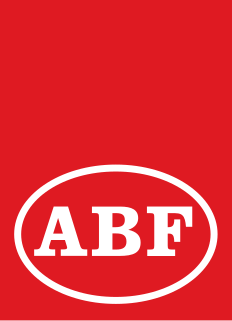 W
WArbetarnas bildningsförbund (ABF) is the educational section of the Swedish labour movement. ABF conducts seminars, classes and study circles on a variety of subjects, including workshops, languages and music.
 W
WBäsk is a Swedish-style spiced liquor flavored with wormwood or absinthe. Sweden is one of the few countries that has never banned absinthe or other wormwood-flavored liquors. Bäsk is old alternative spelling of the word besk which means "bitter".
 W
WThe Bullerby Syndrome is a term referring to an idealization of Sweden, which may occur in German-speaking Europe. It consists of a stereotype image of Sweden with usually positive associations, including wooden houses, clear lakes, green forests, moose, people with blond hair, happy people and midsummer sunshine. The term comes from Astrid Lindgren's The Six Bullerby Children books, set in rural Sweden.
 W
WCinnamon Roll Day falls on 4 October each year. It is an annual theme day created for marketing purposes in Sweden and Finland that was instituted in 1999 by Kaeth Gardestedt. At the time, she was a project manager for Home Baking Council (Hembakningsrådet) which was historically a trade group supported by yeast manufacturers, flour producers, sugar manufacturers, and margarine manufacturers, and is now supported by the Dansukker brand of sugar.
 W
WA crayfish party is a traditional summertime eating and drinking celebration in the Nordic countries. The tradition originated in Sweden, where a crayfish party is called a kräftskiva. The tradition has also spread to Finland via its Swedish-speaking population, and Norway. A similar tradition exists in the Baltic countries in particular in Lithuania and Latvia.
 W
WScania, is the southernmost of the historical provinces (landskap) of Sweden. The former province is roughly conterminous with Skåne County, created in 1997. Like the other former provinces of Sweden, Scania still features in colloquial speech and in cultural references, and can therefore not be regarded as an archaic concept. Within Scania there are 33 municipalities that are autonomous within the Skåne Regional Council. Scania's largest city, Malmö, is the third-largest city in Sweden, as well as the fifth-largest in Scandinavia.
 W
WA Dalecarlian horse or Dala horse is a traditional carved, painted wooden statue of a horse originating in the Swedish province of Dalarna (Dalecarlia). In the old days the Dalecarlian horse was mostly used as a toy for children; in modern times it has become a symbol of Dalarna, as well as of Sweden in general. Several types of Dalecarlian horses are made, with distinguishing features common to the locality of the site where they are produced. One particular style has, however, become much more common and widespread than others. It is stoutly carved and painted bright red with details and a harness in white, green, yellow and blue.
 W
WKulla is an older dialectal name for an unmarried woman, used often in most parts of Sweden around Dalarna, but in present time mostly used as a name for women from Dalarna namely Dalkulla. In the oldest known source from 1640 is the kulla synonymous with a woman. An older not married woman was called gammkulla while a married woman was called käring. The male word is dalkarl or mas, provided from which part of Dalarna you were from.
 W
WFinnish Swedish Heritage Day is a general flag day, which is celebrated in Finland on 6 November. The day celebrates the Swedish-speaking population of Finland, their culture, and the bilinguality of Finland. The main celebrations are aired on the radio, and many smaller celebrations are held around Finland in schools. Usually, the song Modersmålets sång is sung, celebrating the mother tongue. The Finnish Swedish Heritage Day is celebrated on the same day as Gustavus Adolphus Day in Sweden, the day that king Gustavus Adolphus of Sweden was killed at the Battle of Lützen in 1632.
 W
WBy an ordinance issued by the Government of Sweden, a number of days of the calendar year are designated as official Flag Days. This means that the Flag of Sweden is flown on all public flag poles and buildings. Hoisting of the Swedish flag on private flag poles on these days is also strongly encouraged, but not mandatory.
 W
WFolkets Park in Kävlinge, Sweden is a local society who started in 1905 by the workers of Kävlinge shoe factory. In 1905 many people in Kävlinge lived in deep poverty. The factory plant manager allowed workers to explore grounds for growing food besides the factory.
 W
WThe Gävle Goat is a traditional Christmas display erected annually at Slottstorget in central Gävle, Sweden. It is a giant version of a traditional Swedish Yule Goat figure made of straw. It is erected each year by local community groups at the beginning of Advent over a period of two days. It has been the subject of repeated arson attacks, and, despite security measures and the nearby presence of a fire station, the goat has been burned to the ground most years since its first appearance in 1966. As of December 2019, the goat has been damaged 37 times. Burning the goat is illegal and the Court of Appeal stated that the offence should normally carry a 3-month prison sentence as it sentenced a 27-year-old man to a suspended sentence and day fines for aggravated property damage in 2018.
 W
WGötaplatsen is a public square in Gothenburg, Sweden, at the southern end of Avenyn, the city's main boulevard. The square was inaugurated when Gothenburg held a major international industrial exhibition, 1923, celebrating the city's 300th anniversary.
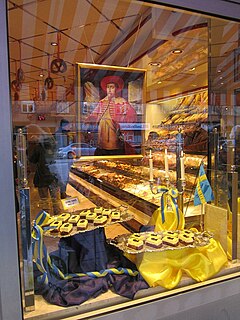 W
WGustavus Adolphus Day is celebrated in Sweden and some other countries on 6 November in memory of King Gustavus Adolphus of Sweden. Observing the day became popular after the 200th anniversary of the king's death in 1632. It is a general flag day in Sweden and Finland. Today it is mainly connected with the consumption of Gustavus Adolphus pastries.
 W
WThe Hot Shots is a collective name for two closely related Swedish dance companies based in Stockholm, Sweden: The Rhythm Hot Shots and the Harlem Hot Shots. The Hot Shots specialize in faithful reproductions of African-American dance scenes in American films from the 1920s, 30s, and 40s. Dances that they perform include Lindy Hop, Tap dance, Cakewalk, Charleston, and Black Bottom. The members of the Hot Shots are also respected dance instructors and accomplished social dancers. The goals of The Rhythm Hot Shots and the Harlem Hot Shots are the same.
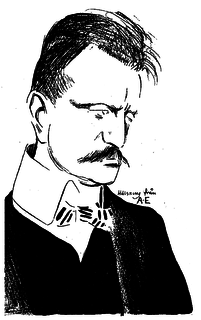 W
WIslossningen i Uleå älv, Op. 30, is a composition by Jean Sibelius, an "improvisation for narrator, men's chorus and orchestra". Sibelius composed it in 1899 on a poem by Zachris Topelius, a Swedish-language Finnish poet, who had dedicated it to Tsar Alexander II of Russia, thus escaping censorship. The piece was an "explicit protest composition" against a Russia restricting the autonomy of the Grand Duchy of Finland. Sibelius wrote it for a lottery of the Savonian-Karelian Students' Association, where he conducted the first performance on 21 October 1899.
 W
WA kronkåsa is a form of elaborate drinking cup that was used during the Renaissance in Sweden.
 W
WSwedish is the official language of Sweden and is spoken by the vast majority of the 10 million inhabitants of the country. It is a North Germanic language and quite similar to its sister Scandinavian languages, Danish and Norwegian, with which it maintains partial mutual intelligibility and forms a dialect continuum. A number of regional Swedish dialects are spoken across the county. In total, more than 200 languages are estimated to be spoken across the county, including regional languages, indigenous Sámi languages, and immigrant languages.
 W
WLesbian, gay, bisexual, transgender (LGBT+) rights in Sweden are regarded as some of the most progressive in Europe and in the world. Same-sex sexual activity was legalized in 1944 and the age of consent was equalized to that of heterosexual activity in 1972. Sweden also became the first country in the world to allow transgender persons to change their legal gender post-sex reassignment surgery in 1972 whilst transvestism was declassified as an illness. Legislation allowing legal gender changes without hormone replacement therapy and sex reassignment surgery was passed in 2013.
 W
WMajblomman is a traditional charity in Sweden that is sold by schoolchildren in April–May every year since 1907, originally to collect money for people suffering from tuberculosis. The Majblomma is of different colour every year. It was founded by Beda Hallberg from Onsala.
 W
WA midsommarkrans is a ring-shaped wreath made of flowers and leaves. A midsommarkrans is usually worn during the Midsummer celebrations in Sweden. It is the traditional headgear of a Sommar i P1 host during the presentation show in early June. They are made to look festive and celebrate midsummer.
 W
WA mora knife is a small sheath knife. It is a fixed blade knife, with or without a finger guard. The term originates from knives manufactured by the cutleries in Mora, Dalarna In Sweden and Finland, Mora knives are extensively used in construction and in industry as general-purpose tools. Mora knives are also used by all Scandinavian armies as an everyday knife.
 W
WMother Svea or Mother Swea is the female personification of Sweden and a patriotic emblem of the Swedish nation.
 W
WThe National Day of Sweden is a national holiday observed annually in Sweden on 6 June. Prior to 1983, the day was celebrated as Swedish Flag Day. At that time, the day was renamed the Swedish National Day by the Riksdag.
 W
WRaggare is a subculture found mostly in Sweden and parts of Norway and Finland, and to a lesser extent in Denmark, Germany, and Austria. Raggare are related to the American greaser and rockabilly subcultures and are known for their love of hot rod cars and 1950s American pop culture. Loosely translated into English, the term is roughly equivalent to the American "greaser", English "rocker", and Australian "Bodgie" and "Widgie" culture; all share a common passion for mid-20th-century American cars, rockabilly-based music and related fashion.
 W
WA rya or rye is a traditional Scandinavian wool rug with a long pile of about 1 to 3 inches. They were made using a form of the Ghiordes knot to make the double-sided pile fabric. Though rya means "rug" in English, the original meaning in Sweden of rya was a bed cover with a knotted pile. The first ryas originated in the early fifteenth century as coarse, long-piled, heavy covers used by mariners instead of furs. As time progressed, the rugs have evolved to be lighter and more colorful. The insulation that ryas provide protect against the cold Scandinavian climate. Ryas are a knotted pile carpet, with each knot composed of three strands of wool, which enables the rug to exhibit rich texture from all the different shades of color. The name originates from a village in southwest Sweden. The term rya may also refer to a breed of sheep whose wool is used to make rya carpets.
 W
WSaffranspannkaka or Gotlandspannkaka (English: Saffron pancake or Gotland pancake) is a dessert from the island of Gotland, Sweden, and is considered as one of their provincial dishes. It is made of pudding rice, cream, milk, sugar, egg, chopped almonds, and saffron. The cake can be eaten lukewarm or cold and is served according to tradition with dewberry jam and whipped cream. If necessary, with regard to allergies, the almonds can be excluded.
 W
WSaint Knut's Day, or the Feast of Saint Knut, is a traditional festival celebrated in Sweden and Finland on 13 January. It is not celebrated on this date in Denmark despite being named for the Danish prince Canute Lavard, and later also associated with his uncle, Canute the Saint, the patron saint of Denmark. Christmas trees are taken down on tjugondag jul, and the candies and cookies that decorated the tree are eaten. In Sweden, the feast held during this event is called a Knut's party.
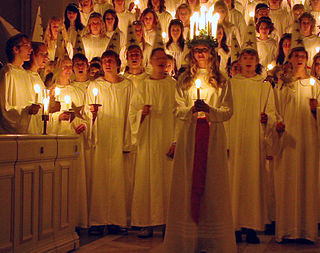 W
WSaint Lucy's Day, also called the Feast of Saint Lucy, is a Christian feast day observed on 13 December. The observance commemorates Lucia of Syracuse, an early-4th-century virgin martyr under the Diocletianic Persecution, who according to legend brought food and aid to Christians hiding in the Roman catacombs, wearing a candle lit wreath on her head to light her way and leave her hands free to carry as much food as possible. Her feast day, which coincided with the shortest day of the year prior to calendar reforms, is widely celebrated as a festival of light. Falling within the Advent season, Saint Lucy's Day is viewed as a precursor of Christmastide, pointing to the arrival of the Light of Christ in the calendar on Christmas Day.
 W
WSmå grodorna is a traditional Swedish dance and song traditionally performed at midsummer, where the participants dance around the maypole. The dance involves movements that illustrate body parts that frogs lack, namely "ears" (öron) and "tails" (svansar). Occasionally, Små grodorna is also sung at Christmas, but instead of dancing around the maypole, Swedes dance around the Christmas tree.
 W
WSmoking in Sweden is at a very low prevalence; only 11% of the total Swedish population smoked daily in 2016. Around another 10% smoke occasionally. Smoking has been banned in all bars and restaurants since May 2005. A majority of Swedes supported the introduction of the ban. Sweden was the only European country to achieve the WHO goal of less than 20% daily smoking prevalence among adults by year 2000. Sweden has a high level of use of smokeless tobacco, specifically a moist snuff product called 'snus', which some Swedes have used as a replacement for smoking.
 W
WSuecia Antiqua et Hodierna is a collection of engravings collected by Erik Dahlbergh during the middle of the 17th century. Suecia Antiqua et Hodierna can be described as a grand vision of Sweden during its period as a great power. Dahlberg's direct source of inspiration was the topographical publications issued by the Swiss publisher Matthäus Merian. In 1661 Dahlberg was granted a royal privilege enabling him to realize his plans, which kept him occupied for a good decade, and a work that would not be printed until after his death. In its final state Suecia Antiqua et Hodierna comprised three volumes containing 353 plates.
 W
WA Suecophile is someone with a great interest in the Swedish culture and the Swedish language. The term is most often used when this interest is held by a non-Swede. An alternative spelling is Svecophile.
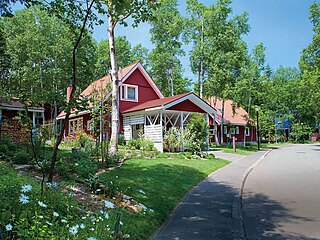 W
WSweden Hills is a Swedish-style village in Tōbetsu, Hokkaidō in Japan.
 W
W W
WThe Swedish Tourist Association, founded in 1885, aims at promoting outdoor life and knowledge among the Swedes about their country.
 W
WThree Crowns is the national emblem of Sweden, present in the coat of arms of Sweden, and composed of three yellow or gilded coronets ordered two above and one below, placed on a blue background.
 W
WVete-Katten is a classic Sweden pastry- and coffeeshop.
 W
WWaffle Day is a tradition that is celebrated in Sweden, Norway, and Denmark, on March 25, which is also the Feast of the Annunciation, upon which waffles are typically eaten. The shift from the religious celebration to Waffle Day occurred because the Swedish Vårfrudagen, meaning "Our Lady's Day", sounds similar to Våffeldagen in faster speech, and so over time Swedes began calling it Waffle Day and celebrating by eating waffles.
 W
WWALTIC, the Writers’ and Literary Translators’ International Congress, titled "The Value of Words", is a bi-annual international literary congress founded and owned by The Swedish Writers’ Union. Having its premier launch in Stockholm between 29 June and 2 July 2008, WALTIC’s aim and thematic scope is divided in accordance to three key elements: Increase literacy, Safeguard freedom of expression, and Strengthen authors’ rights.